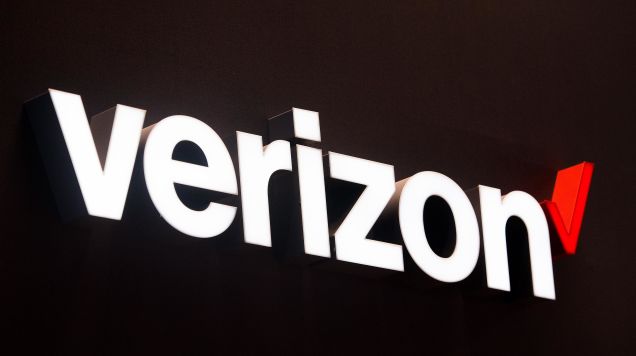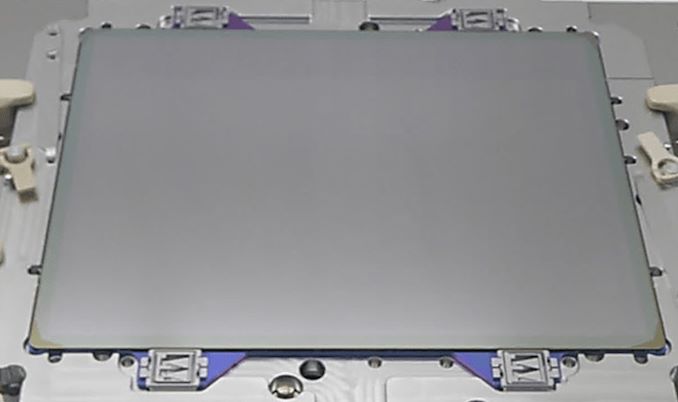The $199 Analogue Pocket will play old portable games from their original cartridges, once it ships in October.
Source: Engadget – Analogue Pocket portable console delayed again, this time until October
Monthly Archives: March 2021
A Space Oops Leads to a Misunderstanding in Super-Short Sci-fi Tale Floaters

In space, nobody can hear you be a complete buffoon—unless you’re speaking to them directly about how, exactly, you painted the wrong number on the side of your own ship.
Source: io9 – A Space Oops Leads to a Misunderstanding in Super-Short Sci-fi Tale Floaters
Wind Waker Speedrunners Finally Found A Way To Skip Cutscenes

The latest trick in The Legend of Zelda: The Wind Waker speedrunning has the potential to do away with the game’s previously unskippable cutscenes entirely.
Source: Kotaku – Wind Waker Speedrunners Finally Found A Way To Skip Cutscenes
Verizon Is Offering Big Discounts and Trade-Ins on Broken Phones on April 1, and It's Actually Not a Prank

Now’s the time of year when it pays to be extra wary of pranks and promotions that seem too good to be true. But starting tomorrow, yes, on April 1, Verizon has some big discounts on phones and trade-ins for broken devices that are totally legit.
Source: Gizmodo – Verizon Is Offering Big Discounts and Trade-Ins on Broken Phones on April 1, and It’s Actually Not a Prank
India Offers $1 Billion In Cash To Each Chipmaker Who 'Makes In India'
According to Reuters, India is offering more than $1 billion in cash to each semiconductor company that sets up manufacturing units in the country as it seeks to build on its smartphone assembly industry and strengthen its electronics supply chain. From the report: Prime Minister Narendra Modi’s “Make in India” drive has helped to turn India into the world’s second-biggest mobile manufacturer after China. New Delhi believes it is time for chip companies to set up in the country. “The government will give cash incentives of more than $1 billion to each company which will set up chip fabrication units,” a senior government official told Reuters, declining to be named as he was not authorised to speak with media. “We’re assuring them that the government will be a buyer and there will also be mandates in the private market (for companies to buy locally made chips).”
How to disburse the cash incentives has yet to be decided and the government has asked the industry for feedback. India also wants to establish reliable suppliers for its electronics and telecom industry to cut dependence on China following border skirmishes last year. Chips made locally will be designated as “trusted sources” and can be used in products ranging from CCTV cameras to 5G equipment.
Read more of this story at Slashdot.
Source: Slashdot – India Offers Billion In Cash To Each Chipmaker Who ‘Makes In India’
Joel Greenberg, the Tax Collector Tied to US Rep Matt Gaetz, Once Blew $90k in Taxpayer Money On a Crypto Mining Rig

The sex trafficking scandal surrounding Florida U.S. Representative Matt Gaetz is getting gnarlier by the day, both because of the circus sideshow of supporting characters it brings with it and the good questions it raises about why we, as a country, insist on electing people to our federal government who seem like…
Source: Gizmodo – Joel Greenberg, the Tax Collector Tied to US Rep Matt Gaetz, Once Blew k in Taxpayer Money On a Crypto Mining Rig
Scientists Have Observed Ominous Winter Leaks in Greenland Ice Sheet Lakes

For the first time ever, scientists have shown that lakes on Greenland’s ice sheet can drain during the winter months, in a phenomenon that could accelerate the rate of glacial melt.
Source: Gizmodo – Scientists Have Observed Ominous Winter Leaks in Greenland Ice Sheet Lakes
The Batman: The Long Halloween Animated Movie Has an Appropriately Lengthy Voice Cast

DC Comics’ animation department is finally tackling one of the Dark Knight’s greatest adventures, The Long Halloween. The voice cast for the adaptation of the classic 1996 story by Joseph “Jeph” Loeb and Tim Sale has been announced, and there are a few surprises in there.
Source: io9 – The Batman: The Long Halloween Animated Movie Has an Appropriately Lengthy Voice Cast
'Sam & Max: This Time It's Virtual!' heads to Oculus Quest this summer
SteamVR, Viveport and PSVR releases will follow in 2021 and 2022.
Source: Engadget – ‘Sam & Max: This Time It’s Virtual!’ heads to Oculus Quest this summer
Oracle Releases UEK R6U2 Kernel With New Slab Memory Controller
Oracle continues advancing their “Unbreakable Enterprise Kernel” as the company’s modified Linux kernel build offered to Oracle Linux users as an alternative to its Red Hat Compatible Kernel for their RHEL-based OS. Unbreakable Enterprise Kernel 6 Update 2 is out to end Q1’2021 with various new features…
Source: Phoronix – Oracle Releases UEK R6U2 Kernel With New Slab Memory Controller
Teens Fully Protected By Pfizer's COVID-19 Vaccine, Company Says
An anonymous reader quotes a report from Ars Technica: Adolescents ages 12 to 15 were completely protected from symptomatic COVID-19 after being vaccinated with the Pfizer/BioNTech mRNA vaccine in a small Phase III clinical trial, Pfizer reported in a press release Wednesday. The company also said that the vaccine was well-tolerated in the age group, spurring only the standard side effects seen in people ages 16 to 25. The vaccine is already authorized for use in people age 16 and over.
The vaccine appeared more effective at spurring defensive immune responses in adolescents ages 12 to 15 than in the 16- to 25-year-old group, producing even higher levels of antibodies that were able to neutralize SARS-CoV-2. In a measure of neutralizing antibodies, vaccinated youths in the new trial had geometric mean titers (GMTs) of 1,239.5, compared with the GMTs of 705.1 previously seen in those ages 16 to 25, Pfizer noted. The trial involved 2,260 adolescents ages 12 to 15, of which 1,131 were vaccinated and 1,129 received a placebo. There were 18 cases of symptomatic COVID-19 in the trial, all of which were in the placebo group. In today’s press release, the company trumpeted that the vaccine demonstrated “100 percent efficacy.” The trial was not primarily designed to assess efficacy, however. It was primarily assessing relative immune responses, so it will require more data to fully evaluate efficacy. Additionally, Pfizer and BioNTech have only released top-line trial results, not the full data from the trial, which has not been peer-reviewed.
Read more of this story at Slashdot.
Source: Slashdot – Teens Fully Protected By Pfizer’s COVID-19 Vaccine, Company Says
Analogue Pocket Shipments Pushed Back To October
Analogue just announced its Analogue Pocket handheld console will miss its original May 2021 shipment date and will slip to October instead.
Source: Kotaku – Analogue Pocket Shipments Pushed Back To October
Xfce’s Apps Update for March 2021 Covers New Releases of Thunar, Xfdashboard, and Gigolo
The March 2021 issue of my Xfce’s apps update roundup continues with new releases of Thunar, Xfdashboard, Gigolo, and several panel plugins.
Source: LXer – Xfce’s Apps Update for March 2021 Covers New Releases of Thunar, Xfdashboard, and Gigolo
[$] HPy: a better C API for Python?
The HPy project has been
around for more than a year now; it is meant to provide an alternate C API
for Python that allows extensions to the language to run, and run well, in more
environments. It first came to our attention in a report
of a talk at the 2020
Python Language Summit (LWN coverage), but it goes back to some discussions that were
held at EuroPython 2019. There
are a number of ways that the existing C API holds back innovation for
Python, but there are also some hugely important extensions (e.g. NumPy) that use it; any change to the API
needs to take those into account.
Source: LWN.net – [$] HPy: a better C API for Python?
A Japanese man was charged $81 for cyberbullying star Hana Kimura before her death
An online troll was charged $81 for cyberbullying Hana Kimura. Is that enough?
Source: Engadget – A Japanese man was charged for cyberbullying star Hana Kimura before her death
Even YouTube Is Chilling Out on Weed

On the same day that Governor Andrew Cuomo fully legalized recreational weed use across New York, YouTube quietly lifted a few of its own restrictions regarding the drug, too.
Source: Gizmodo – Even YouTube Is Chilling Out on Weed
How to Configure Nginx to Work with PHP via PHP-FPM
Nginx + PHP is one of the most popular groups of software that you can use to build your website.
Source: Linux Today – How to Configure Nginx to Work with PHP via PHP-FPM
You Know What? Good for Rian Johnson

Rian Johnson’s Star Wars trilogy seems less likely than ever today, seeing as how the director just closed a $450 million deal to make two Knives Out sequels at Netflix. And you know what? Good for him.
Source: io9 – You Know What? Good for Rian Johnson
EUV Pellicles Ready For Fabs, Expected to Boost Chip Yields and Sizes
Foundries started limited usage of extreme ultraviolet (EUV) lithography for high-volume manufacturing (HVM) of chips in 2019. At the time, ASML’s Twinscan NXE scanners were good enough for production, but the full EUV ecosystem was not quite there. One of the things that impacted EUV was the lack of protective pellicles for photomasks, which limited usage of EUV tools and affected yields. Fortunately, the situation with pellicles has finally improved thanks to the recent introduction of production-ready EUV pellicles, and matters promise to get even better in the coming years.
Protecting Precious Reticles
ASML has made a great progress with its Twinscan NXE EUV lithography tools in the recent years, improving performance of light source, availability time, and productivity. Its industry peers have also done a lot to make high-volume manufacturing (HVM) using EUV equipment possible. Still, the EUV ecosystem needs to develop further. One of the most notorious challenges the semiconductor supply chain faced with EUV is development of pellicles that were not available two years ago, which is why TSMC and Samsung Foundry had to invent ways how to use their EUV scanners without protective films.
![]()
For Reference: A 16nm TSMC Pellicle With Reticle
Pellicles protect 6×6-inch photomasks (reticles) during the chip production flow by sealing them away from particles that could land on their surface, which would otherwise damage them or introduce defects to wafers in production. Each reticle for an EUV tool costs $300,000, so chipmakers are eager to protect them against damage by particles or even the EUV radiation itself as this lowers their costs. Meanwhile, reducing risks associated with yields is perhaps even more important.
The need for pellicles, in turn, varies depending on the manufacturer and the types of photomasks employed. Intel, which is known for its big CPU dies, tends to use single-die reticles, which means that just one mask defect introduced by a particle automatically kills the whole die. Meanwhile, if a 25-die photomask is used, a particle adder will ‘only’ result in 4% lower yield (one dead die), which is why it’s been possible to get away without pellicles for smaller chips and multi-die photomasks.
ASML Leading the Pack. For Now
The industry started to develop protective films for EUV tools relatively late after it transpired that nobody can guarantee that an ultra-complex EUV scanner is 100% free of harmful particles, which is why they were not ready in 2019.
Pellicles for photomasks to be used with deep ultraviolet (DUV) lithography equipment are common and cheap. By contrast, since photomasks for EUV are different from photomasks for DUV (EUV masks are essentially 250 to 350-nm thick stacks featuring 40 to 50 alternating layers of silicon and molybdenum on a substrate), pellicles for such reticles are also quite different. In particular, the very short wavelength of EUV means that pellicles for it have a number of requirements that make them uneasy to produce and expensive. EUV pellicles have to be extremely thin, should not affect reflection characteristics of reticles, should feature a high transmission rate (the higher the rate, the higher is productivity of a scanner), should sustain high EUV power levels, and withstand extreme temperatures (from 600ºC to 1,000ºC in the future).

ASML’s EUV Pellicle (Image Credit: Semiconductor Engineering)
“Most materials absorb very strongly at the more energetic 13.5nm EUV wavelength and, even when the most EUV-transparent materials are selected, the membranes must be extremely thin to approach 90% transmittance,” said Emily Gallagher, a principal member of technical staff at Imec. “Such thin membranes are not usually capable of maintaining sufficient strength to be free-standing at the required dimensions. Additionally, the EUV scanner environment is not compatible with many materials and will subject the pellicle to pump-vent cycles.”
To date, a number of EUV pellicle options have emerged, according to SemiEngineering:
- ASML introduced its first EUV pellicles in 2019 and licensed the technology to Mitsui Chemicals, which intends to start their volume sales in Q2 2021. Since then, ASML has improved its pellicles.
- Imec has disclosed test results of its pellicles based on carbon nanotubes.
- Graphene Square, Freudenberg Sealing Technologies (FST), and some universities are developing their own pellicles.
So far, only ASML has managed to create commercially viable pellicles for EUV tools that are actually available. ASML’s pellicles are based on polysilicon that is 50 nm thick. Back in 2016, they demonstrated a 78% transmissions rate on a simulated 175W source. Currently ASML can sell a pellicle with an 88% transmission rate. And shortly, Mitsui will start supplying such pellicles in volume.
ASML’s latest prototypes made of metal silicide demonstrate a 90.6% transmission rate with 0.2% non-uniformities and less than 0.005% reflectivity on a 400W source.
“This upgrade supports our roadmap, which eventually will take source power up to 400 Watts,” said Raymond Maas, ASML’s product manager for pellicles, in an interview with Bits&Chips.nl. “The pellicle heats up to 600ºC at that power level, which the polysilicon couldn’t withstand.”
By contrast, Imec’s prototype pellicles have a transmission rate of 97.7%. In fact, in the long term, when more advanced light sources are available, more sophisticated pellicles will be needed and this is where Imec’s carbon nanotubes-based pellicles will come into play.
“Few materials have the potential of high EUV transmission beyond 90% and even fewer materials are at the same time compatible with EUV powers beyond 600W. In addition, the pellicle needs to be strong to be suspended over a large area of the mask (~110mm x 140mm),” said Joost Bekaert, a researcher from Imec.
Unfortunately, it is unclear when Imec’s carbon nanotube-based pellicles will be ready for primetime.
Summary
TSMC and Samsung Foundry have invented ways to use EUV lithography tools without pellicles on multi-die photomasks for smaller chips, but such methods are risky as any particle adder can become a yield killing defect. Furthermore, such methods are risky for bigger chips and single-die photomasks, so pellicles are critical for enabling large dies to be made with EUV tools. That said, regardless of the photomask size, pellicles are needed to improve EUV yields and reduce risks across the board.
Overall then, the use of and improvements in EUV pellicles will be a gradual process. The initial pellicles developed and made by ASML and soon to be made by Mitsui are good enough for some of today’s needs, but there is room for improvement with their transmission levels, as evidenced by the next-generation prototypes developed by ASML and Imec. Better pellicles will be needed to account for future scanners as well, since those machines will have more powerful sources. Nonetheless, since such pellicles have a number of indisputable advantages, they are going to be used by chipmakers as they can help to improve yields even at the cost of some productivity.
Source: AnandTech – EUV Pellicles Ready For Fabs, Expected to Boost Chip Yields and Sizes
Google Promises Not to Muzzle Staff on Pay, Settling Labor Case
According to Bloomberg, Google has settled one of the first legal complaints filed by a new union, promising not to silence workers who talk about their pay. From the report: “WE WILL NOT tell you that you cannot discuss policies with other employees,” states the notice to staff, signed by an attorney for Google and parent Alphabet Inc. and being posted at a Google data center in South Carolina. “WE WILL NOT discipline you because you exercise your right to discuss wage rates, bonuses, hours and working conditions with other employees.”
The settlement ends a National Labor Relations Board complaint filed by the Alphabet Workers Union in February alleging that management at the data center forbid workers from discussing their pay and also suspended a data technician, Shannon Wait, because she wrote a pro-union post on Facebook. Wait was reinstated earlier this year, although she left soon after. […] The Alphabet Workers Union filed its complaint against units of Google staffing vendor Adecco Group AG, which employed workers including Wait, and also against Alphabet, which it deemed a âoejoint employerâ — a company with sufficient control over a group of workers to be legally liable for their treatment. The settlement also requires the companies to remove any reference to Waitâ(TM)s suspension from her file.
Read more of this story at Slashdot.
Source: Slashdot – Google Promises Not to Muzzle Staff on Pay, Settling Labor Case
